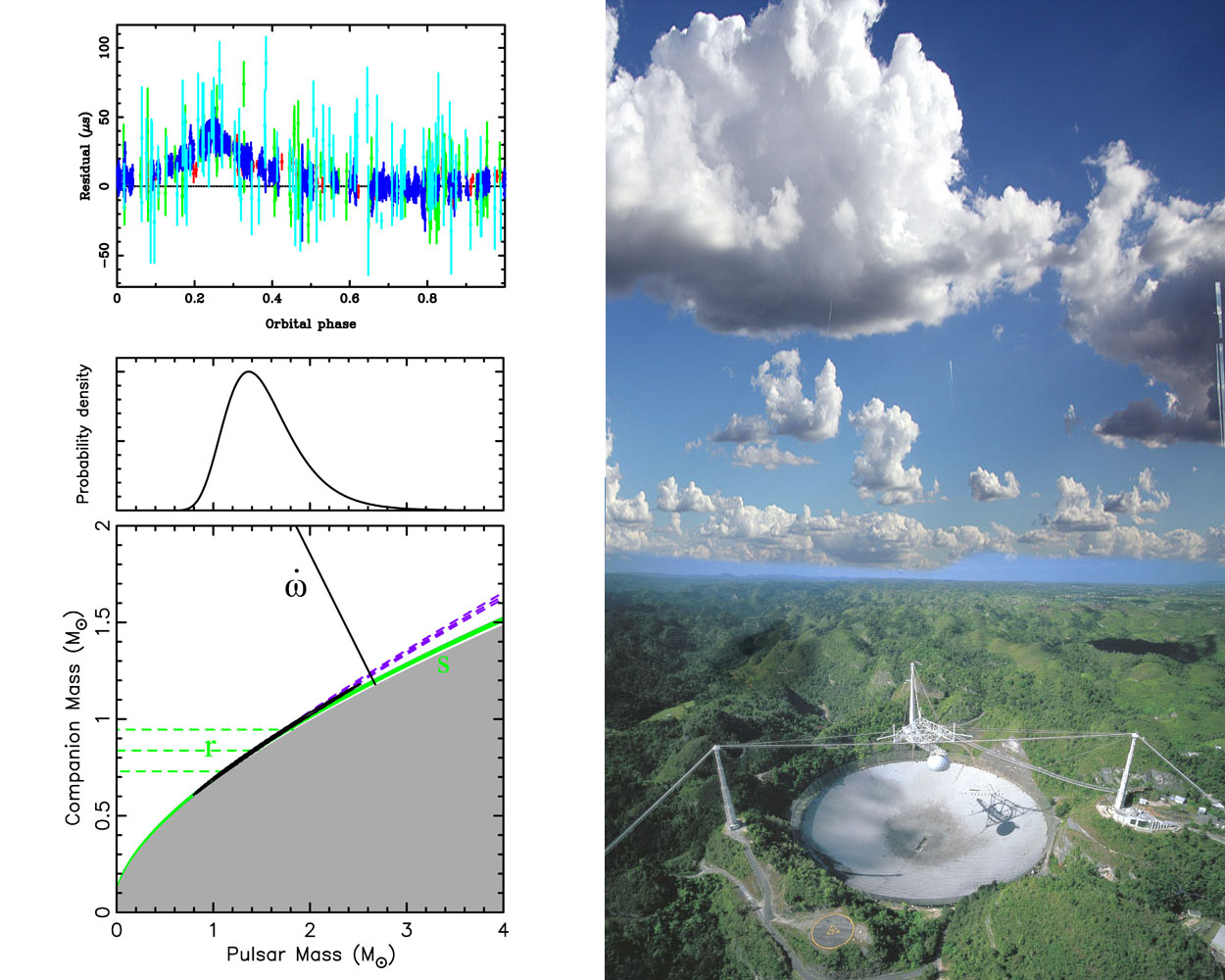| Description: | The PALFA pulsar survey running on the Arecibo telescope (Figure, right) aims to aid the exploration of the composition, internal structure, and magnetospheric state of neutron stars. Millisecond pulsars (MSPs) are particularly well suited to address this variety of problems in fundamental physics and astrophysics. Timing observations of such MSPs in binary systems can be used to estimate the pulsar and companion masses. Given the large masses and velocities involved, the orbits in several such binary systems are no longer adequately described by purely Keplerian orbits; there, general-relativistic effects are observed (The discovery of the first system, PSR B1913+16, led to the Physics Nobel Prize 1993). To describe these new orbits a set of up to five "post-Keplerian" parameters is needed. Measurement of these parameters in real-life system can lead to neutron-mass determinations; which in turn allow us to constrain the equation of state (EoS) of matter at densities larger than that of an atomic nucleus.
We recently presented two millisecond pulsar discoveries with PALFA (Deneva et al. 2012, ApJ 757, 89). One of these, PSR J1949+3106, is in a 1.9-day, nearly edge-on binary system with a massive companion. After four years of timing, the post-Keplerian "Shapiro delay", the extra delay caused by the space-time curvature encountered by the pulsar radio signal, whenever it needs to travel close past the companion to reach Earth, is clearly measured: the top-left panel in the figure shows a clear "bump" at orbital phase 0.25. The "range" (r) and "shape" (s) parameters describing that bump translate to the green lines in bottom-left panel. With other measured parameters, these define the 2-D likelyhood ratio for the neutron-star and companion mass. As can be seen in the 1-D projection, middle-left, the mass for PSR J1949+3106 is 1.47 (+0.43,-0.31). Solar masses. The companion is likely a 0.85 solar mass C-O or O-Ne-Mg white dwarf. This "intermediate mass" suggests there was only a short period of mass transfer and pulsar spin-up; and indeed the pulsar appears close to its presumed birth weight. |

